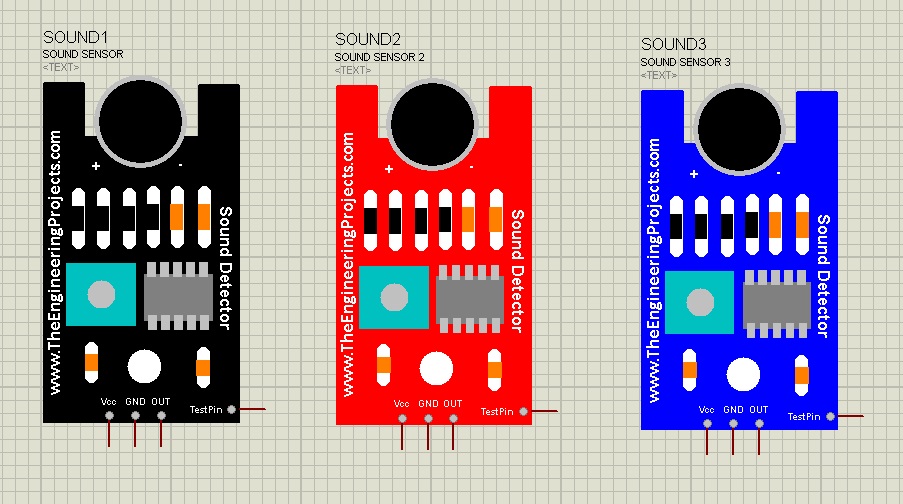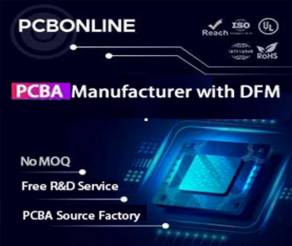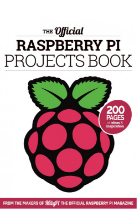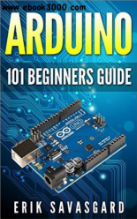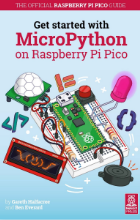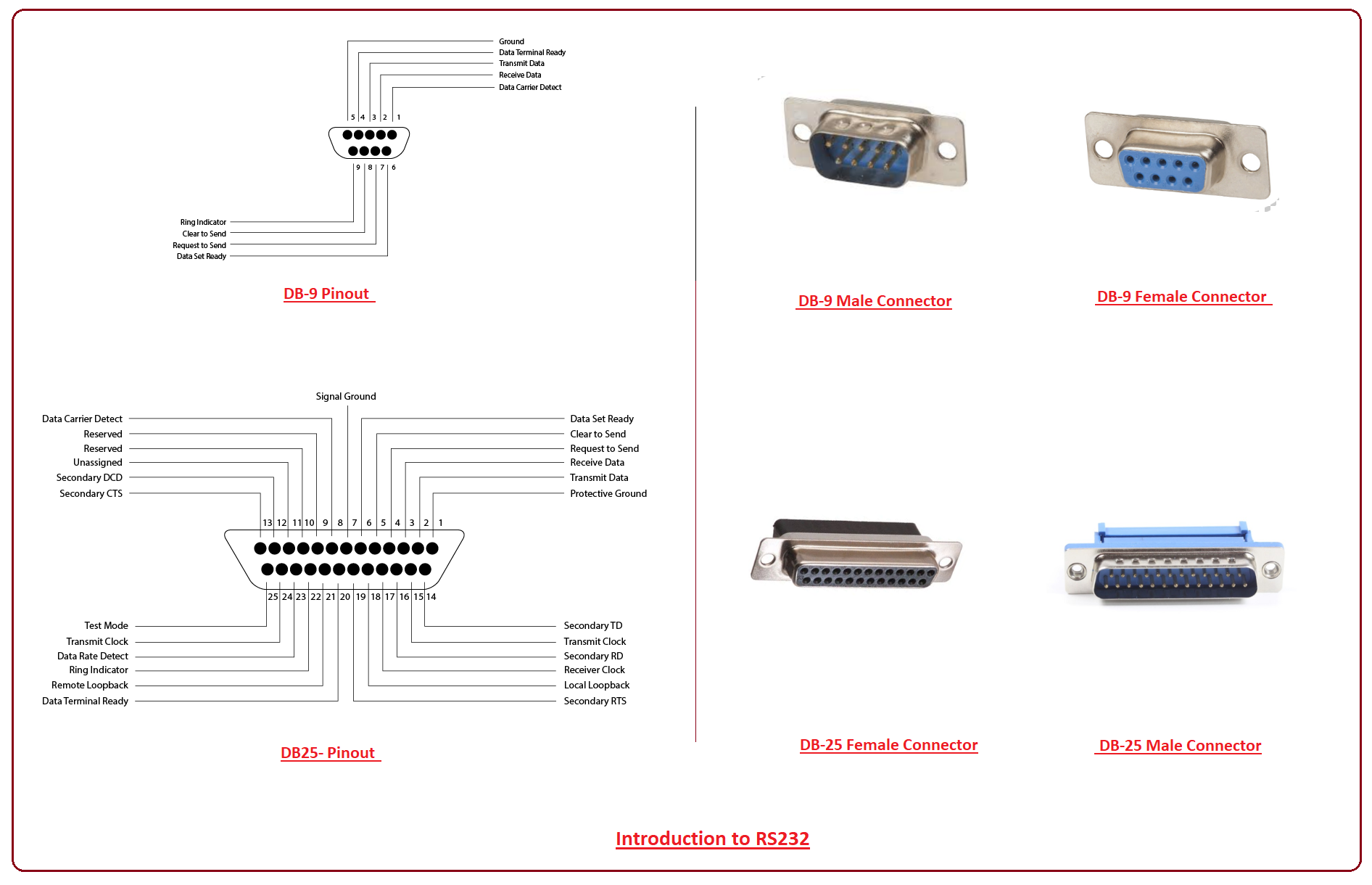

Introduction to RS 232


Introduction to RS232
RS 232, recently known as TIA 232, is a recommended standard protocol for serial data transmission between the electronic devices. It mainly works on three line signals: a transmission line, receive line and ground.- The transmission line is mainly used to send the data serially from one end and receive line accepts the data from the other end while the common ground is used for devices.
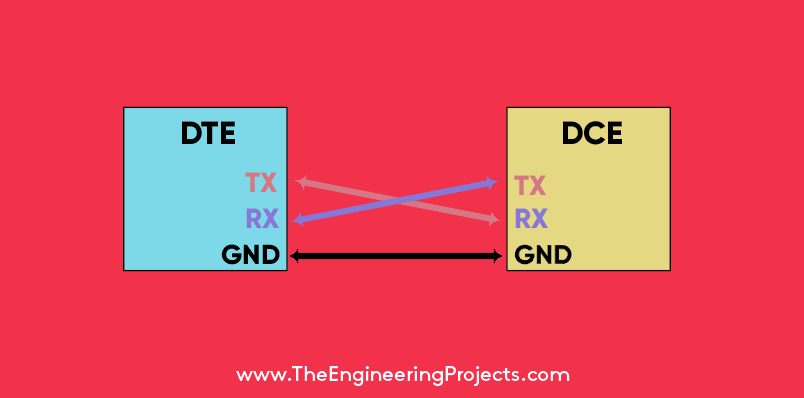
- RS232 data is bi-polar in nature, indicating an "ON or 0-state (SPACE) condition" if a voltage is around 3 to 12 V and features an "OFF" or 1-state (MARK) condition if voltage ranges from -3 to -12 V.

- The duration at which the required signal stays in the particular state is dependent on the baud rate. The communication carried out in a RS 232 protocol is measured in baud - A number of bits transferred per second i.e. 1000 baud indicate 1000 bits per second.
- Even
- Odd
- Mark
- Space
- None
- As mentioned earlier many computers don't come with RS 232 port anymore, therefore we need to add USB-to RS 232 converter externally in order to make them compatible with RS 232 peripheral devices.
Communication Process
The communication is simply based on the transmission and receive protocol and a total of 9 pins are involved in carrying out the complete transmission. The following figure shows how the data is transmitted over the terminal.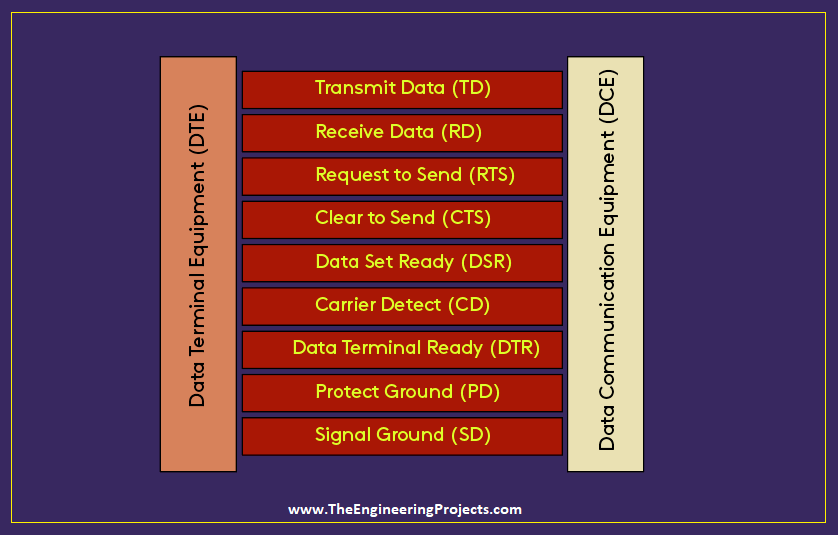
- The CD pin represents the current status of the RTS pin. If CD pin remains turned OFF, it will show the DTE terminal is not ready to send data over the channel. Similarly, turning it ON will be showing the DTW desires to send data and looking for permission from the other end.
- The DTR pin must be turned ON before both terminals are ready to communicate with each other. Actually, DTR (Data Terminal Ready) will be indicating that entire arrangement from both terminals is adequate and matches with the required protocol for data transfer. It serves as a go-ahead signal for the communication.
Connector Pinout
Following figure shows the configuration of DB 25 connector.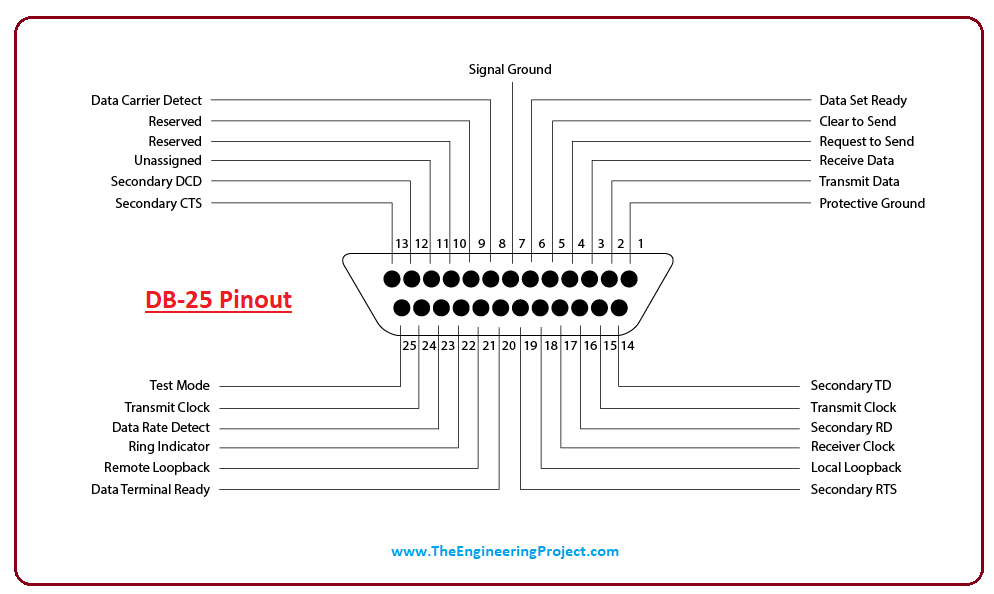
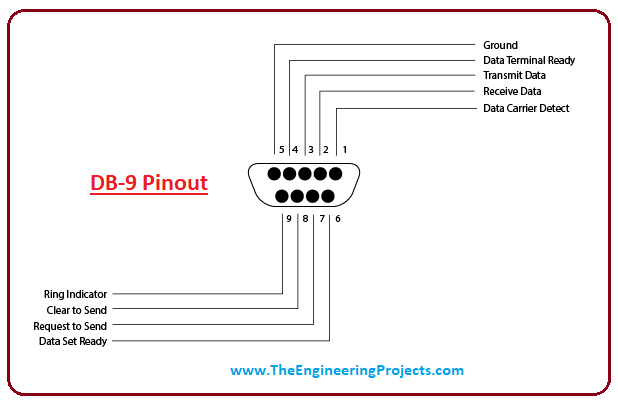
- DB-9 and DB-25 connectors offer the outstanding quality and reliability for a number of serial and parallel (IEEE 1284) applications.
Types of Serial Communication
There are two main types of serial communication. Half Duplex Full Duplex Half Duplex, as the name suggests, transfers the information in one direction only. It comes with two lines where one is a data line and other is signal ground. In this communication, the terminal is capable to send or receive data, but not at the same time. This method is an old one and is not under practice anymore. Full Duplex communication can transmit and receive data in both directions, requiring three main lines: data transmit line, data receive line and signal ground.Applications
Before USB came into play, RS-232 ports were the part and parcel for data communication between a computer and other peripheral devices. Still, they are successful in grooving their way in many science and technology applications. Let's have a look.- In the absence of any network connection, RS232 ports are used to communicate in headless systems.
- Many Computerized Numerical Control Systems are equipped with RS232 port.
- Similarly, two more lines RTS and CTS are included in a 5-wire version as per the technical needs where two-way data transmission layered with hardware flow control is required.
×
![]()








 1 user
1 user






 Continue Wishlist
Continue Wishlist





 Getting Started Guide
Getting Started Guide
 Help Center
Help Center
 Contact us
Contact us
 Doist Blog
Doist Blog
 Privacy
Privacy
 Security
Security
 Terms of Service
Terms of Service
 What's new: Channel Descriptions
What's new: Channel Descriptions





 Embedded Modules
Embedded Modules adnanaqeel
adnanaqeel 1 Comments
1 Comments








 2.3k
2.3k
 953
953
 921
921
 2.1K
2.1K
 introduction to rs232
rs232 working
rs232 applications
rs232 protocol
introduction to rs232
rs232 working
rs232 applications
rs232 protocol

 Saturday, October 20, 2018
Saturday, October 20, 2018